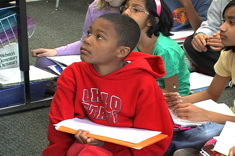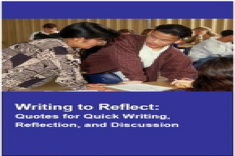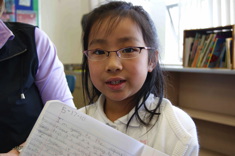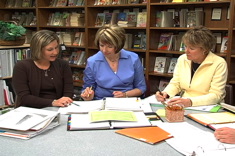Katie is a veteran teacher who willingly shares what she is learning all the time. Her stance has evolved over time from the traditional preparation she received in her preservice program to the reflective teacher she is today. The past couple of years have offered her many opportunities for growth, and it has been an invaluable opportunity for me as her literacy coach to watch this evolution in action.
Recently Katie’s teaching was videotaped with the possibility that it would be shared with a wider audience. Katie stopped by my office on the morning of the taping to share her anxiety. Since it was her third time in front of the cameras, I dismissed her anxiety and went straight to superficial compliments, noticing her new haircut and remarking how her shirt was perfect for the camera.
Soon after the cameras recorded her comprehension lesson with Ira Sleeps Over, she stopped by my office again and expressed her disappointment. This time I paid attention when she mentioned her nerves and anxiety. I made a mental note to talk with her about it later.
Katie went home that weekend and reflected on her teaching, as well as the greater lessons from the experience. She returned to school on the following Monday determined to meet the objectives she had missed when the cameras were recording. Working on inferring skills and delving deeply into text had been her targets. Rather than deep insights, her students’ literal retellings and superficial statements had ended up on the chart.
Katie had prepared well. She had carefully designed questions to elicit deeper thinking, but admitted that when the cameras got rolling, she had forgotten them and sped through her lesson. After reflecting on what had happened, Katie decided to go back and give herself permission for a “do-over.” Her epiphany was realizing that until a few years ago, the traditional Katie would have barreled on, but the reflective practitioner she is becoming decided there was a better way.
Do-Overs and Reflecting with Students
Returning to her classroom on Monday, Katie shared with her students how nervous she had been on the day the cameras were in the classroom. A resonating chorus rang out from the children. She explained that whenever the principal observes or other visitors are in the room, she gets nervous and often hurries. When this happens, she thinks that what is observed or recorded is not the best she can do—which was the case with the videotaping. With heads nodding, children shared how they get anxious, too, and it causes them to rush because their brain is in “super-drive going fast.” Katie then asked her students if she could have the opportunity for a second chance, a “do-over.”
When Katie pulled out Ira Sleeps Over for a second time, she remembered to show the children the title on the cover. This particular copy is her own book—one of her favorites from when she was a child. When she slowed down and remembered to use her questions to prompt deep thinking about the text, the children responded eagerly. In fact, they helped her look at the book in ways she had never before considered. I asked Katie what happened at the end of her lesson. She said, “We all just sort of sat in the glow of a wonderful lesson. I went home feeling like it was my best day of teaching.”
She said she had learned a lot from reflecting on the lesson and deciding to teach it again. However, the greater lesson had been personally experiencing how her students feel when they are asked to perform—especially with a stopwatch in their face as we time their reading rate. She asked, “Is there a better way? Is it even accurate?”
I responded with a question of my own: “Could that magic have happened without you bombing on the lesson and reflecting about it in front of them—sharing yourself as a learner?” We both came to the same conclusion: probably not. Perhaps good teaching comes to us not by our brilliance, but our willingness to expose our failures and model our determination to try again.







